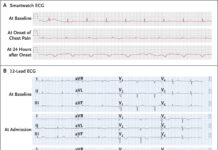Case Presentation
A 42-year-old South Asian man, a father of two, was promptly admitted to District General Hospital in Sri Lanka. He had attempted suicide by ingesting a substance known as S. No other harmful substances were identified. He had no significant medical history.
Within 90 minutes of ingestion, he exhibited a patent airway, shallow breathing, and 92% oxygen saturation. Vital signs indicated a pulse rate of 110 bpm, blood pressure of 140/85 mmHg, and a Glasgow Coma Scale (GCS) score of 11/15.
Management
Initial management included oxygen therapy, catheterization, nasogastric tube (NGT) insertion, and activated charcoal administration. Additionally, doctors administered saline solution to prevent potential cerebral edema. Blood tests, including venous blood gas analysis, showed a pH of 7.38, partial pressure of carbon dioxide (PCO2) of 40 mmHg, partial pressure of oxygen (PO2) of 85 mmHg, bicarbonate (HCO3) level of 24 mmol/L, and lactate concentration of 1.5 mmol/L.
An electrocardiogram revealed sinus tachycardia with a heart rate of 110 bpm. However, his condition deteriorated, necessitating intubation due to compromised airway patency. Doctors administered intravenous dexamethasone to address airway inflammation. Arterial blood gas analysis post-intubation demonstrated disturbances in pH (7.35), PCO2 (45 mmHg), PO2 (75 mmHg), bicarbonate level (22 mmol/L), and lactate concentration (3.0 mmol/L). Doctors initiated fluid resuscitation, and they transferred the patient the intensive care unit (ICU) for further management. Initial blood investigations returned unremarkable results.
ICU Care
In the ICU, the patient received sedation and paralysis to enable lung and neuroprotective ventilation. Supportive care included stress ulcer and thromboprophylaxis. Doctors made an ENT referral for fiber-optic laryngoscopy (FOL) to assess the laryngeal and pharyngeal areas, revealing findings consistent with chemical laryngitis, including mildly inflamed glottis, epiglottis, mildly edematous subglottic area, and vestibule of the larynx. They administered intravenous dexamethasone regularly. Doctors kept the patient nil by mouth for the first two days, with NG feeding starting after 48 hours. Liver enzyme levels gradually normalized.
On day 3, sedation ceased, and the patient’s GCS improved to 10/10. They performed successful extubation of the trachea. Repeat FOL showed resolution of laryngopharyngeal edema. However, the patient could not tolerate the NGT due to anxiety, leading to unsuccessful removal attempts and subsequent reintubation and sedation for safety. The ENT surgeon eventually removed it, involving mild trauma and nasopharyngeal bleeding. They also used adrenaline-soaked gauze for packing, and inserted a Foley catheter with an inflated bulb for tamponade. The distal end of the NGT had formed a clump due to interaction with S, hindering initial removal.
ENT Referral
The ENT team advised keeping the pack for 48 hours before removal. Repeat FOL showed improved laryngopharyngeal inflammation with no significant bleeding, and the leak test was positive.
The nasal pack removal occurred after 48 hours, and the patient underwent tracheal extubation. Doctors started oral feeding gradually, and discharged him to the ward on the fifth day of hospitalization. They did a psychiatry referral at the ward, and scheduled upper gastrointestinal (GI) endoscopy at a tertiary care center in two weeks. Due to limitations in resources, they were not able to conduct toxicology studies.
Polyvinyl chloride: Discussion
S-lon® (S) is a Polyvinyl chloride-based solvent cement widely used in Sri Lankan construction. Its constituents, including 1-cyclohexanone, pose risks of neurotoxicity, respiratory, ocular, and dermal irritation, and liver and kidney damage. Ingestion can lead to CNS depression and even death, although deliberate self-ingestion is rare.
S is categorized as a hazardous substance and a Schedule 5 poison by the manufacturer. Its composition includes polyvinyl chloride polymer, with the primary ingredient being 1-cyclohexanone (25–70%), accompanied by a mixture of 3-butanone (1–15%) and 1-acetone (0–10%). While animal studies have explored doses and plasma concentrations leading to toxicity, comprehensive human data on its effects are lacking. Exposure to S in humans can result in dermal, ocular, pulmonary, gastrointestinal, and neurological effects. Although rare, cyclohexanone toxicity in both humans and experimental animals has been documented. Inhalation is the primary route of toxicity, causing respiratory tract and ocular irritation, as well as central nervous system depression in significant quantities. However, toxicity following ingestion of cyclohexanone-containing organic solvents has not been extensively reported, thus comprehensive management data are unavailable.
Conclusion: Polyvinyl Chloride Poisoning
It is conceivable that the patient, initially managed in the emergency treatment unit, developed upper airway obstruction due to S-induced inflammation, leading to subsequent hypoxia and hypercarbia, resulting in diminished consciousness. Arterial blood gas analysis conducted after intubation and stabilization may not accurately reflect preceding parameters. Moreover, direct CNS depression due to S toxicity could also contribute to the patient’s condition.
Manufacturers advise against inducing vomiting after acute ingestion of S to prevent aspiration. Supportive therapy involving oxygen supplementation and electrolyte correction is recommended. Activated charcoal, known for adsorbing nonpolar compounds, is advocated for significant ingestions due to S’s partial miscibility in water. Prompt identification and management of respiratory tract inflammation and airway involvement are crucial. Animal studies have linked cyclohexanone to delayed liver, renal, and hematological complications, emphasizing the need for prolonged monitoring in human exposures.
Remarkably, the NGT used in this case was composed of PVC, similar to S. Ingested S likely caused amalgamation at the NGT’s distal end, hindering its removal.




